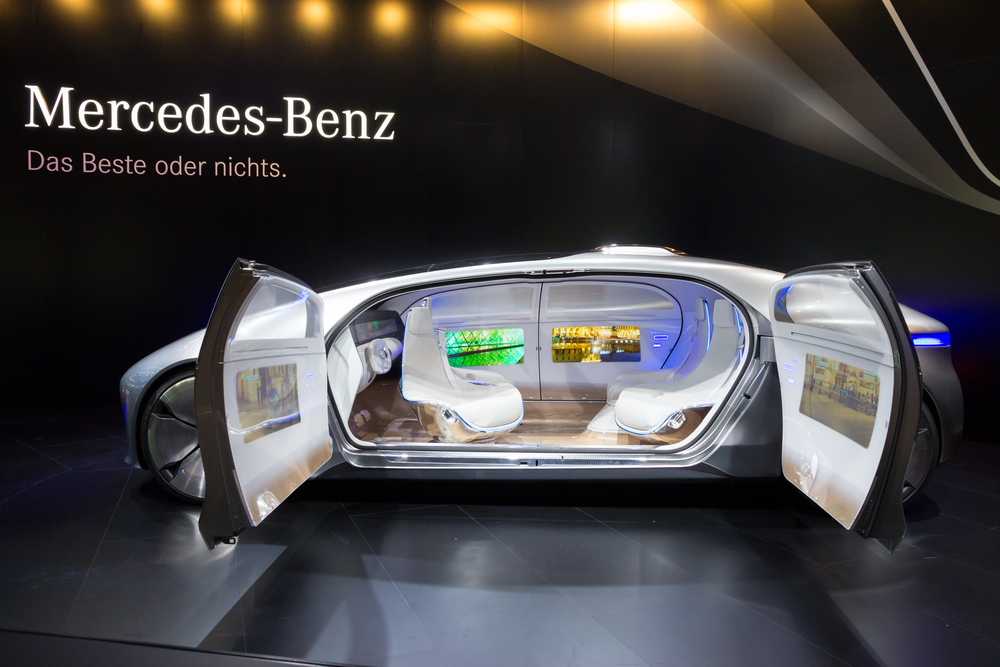
Automakers Bet Big on Data and Analytics

(Jaromir Chalabala/Shutterstock.com)
One of the biggest generators and consumers of data and analytics technology in the coming years may come from a surprising location: your car. From Ford’s deal with IBM to German automaker’s $2.8-billion deal for a location services firm, the big data future of connected cars is closer than you might think.
It wasn’t that long ago that the most advanced data mechanism on a car was the station preset buttons for the AM radio dial. But these days, cars are coming off the assembly line with every manner of big data connectivity that allows cars to not only to avoid potholes, but to even drive themselves.
We’re in the midst of a big data renaissance for the connected car. If you’re a lucky driver of a Tesla, you’re experiencing regular software updates that improve the steering in the adaptive cruise control, an obvious product of extensive machine learning work.
Last week, Ford announced that it’s working with IBM (NYSE: IBM) to create the Smart Mobility Experimentation Platform, which will capture 10 to 15 second snippets of data from individual cars and send it back to the automaker’s data center.
Ford’s data scientists will then use IBM’s streaming analytics tools to spot “tendencies and behaviors” hidden in the data. These insights could then be used to inform the driver to things they would like to know about it, such as the presence of a traffic jam on a normally pristine stretch of road, or a prized parking spot in front of the local Whole Foods.

(My-Life-Graphic/Shutterstock.com)
Ford isn’t limiting to its solutions to cars, and is planning to use its real-time analytics capabilities “to coach people on efficient ways to use multimodal travel options,” the company says. For example, if Ford detects a problem on the subway, the company could–via its new Dynamic Shutting service–use the information to recommend that a commuter rides his bicycle to get to work on time.
The service “takes huge amounts of information and breaks it down to help consumers have better travel experiences,” according to Rich Strader, Ford’s director of enterprise and emerging information technology.
Volvo is getting in on the connected-car action, too. The Swedish automaker (which is now owned by a Chinese holding group) has something called the Connected Vehicle Cloud that allows cars to share information about road conditions.
If a Volvo car detects a slippery section of road, for example, it can beam that data up to the cloud so the next car is automatically warned. “All of a sudden you have logic that works for you without you actually noticing it,” Klas Bendrik, the CIO of Volvo Car Group, recently told V3.co.uk.
Like most carmakers, Volvo is building autonomous cars that drive themselves. But even without handing the keys over to a robot, Volvo says that its various adaptive driving technologies are getting so good that it’s predicting that nobody will be killed or seriously injured in one of its vehicles by the year 2020.
Not to be outdone, Toyota, which is the world’s biggest carmaker, this month announced that it will start outfitting its cars with Data Communication Modules (DCMs). The DCMs will feature always-on modems, and will upload all maintenance- and safety-related data to its Toyota Big Data Center, where it can be analyzed.
With so much data flowing into its Toyota Big Data Center (which is a heck of a name), the company says it will take the security and privacy of its customers quite seriously. It plans to begin adding DCMs to model year 2017 cars sold in the U.S. and will follow it up with cars sold to the rest of the world at a later date.

Prototype of Mercedes self-driving car (VanderWolf Images/Shutterstock.com)
Back across the pond, the big three German automakers last month raked together $2.8-billion to buy HERE, the location services company that was born in Chicago, Illinois as Navteq and which was most recently a division of Finnish technology giant Nokia.
Audi, BMW, and Daimler (which owns Mercedes-Benz) will have exclusive rights to use HERE’s huge collection of location-related data, although it will probably continue to license the content to preexisting subscribers, like Bing, Facebook, Oracle, Garmin, and Yahoo Maps.
HERE owns a digital depiction of every road, building, and park in 94 countries. It provides live traffic information in 33 countries and has indoor maps available for about 49,000 unique buildings in 45 countries, according to Wikipedia.
It’s clear that cars are evolving to serve a similar purpose as phones. In the same way that mobile phones and mobile apps have become massive conduits for consumers to share data with companies about themselves, cars–as the ultimate mobility solution–are a natural fit for sharing and consuming data. As we move about the world, we’re naturally curious to know what’s around us, and companies of all stripes are capitalistically inclined to offer us services.
Related Items:
How Toyota Revamped Its Collections Biz with Big Data Analytics
How Uber Uses Spark and Hadoop to Optimize Customer Experience
How NVIDIA Is Unlocking the Potential of GPU-Powered Deep Learning


























